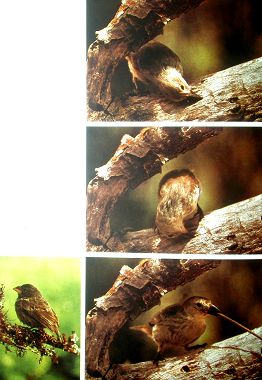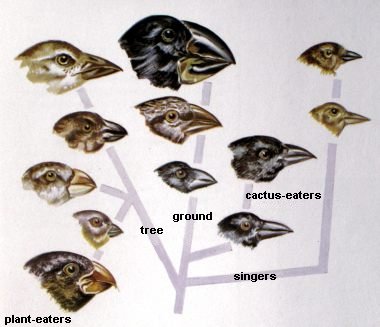| Darwin got his idea of evolution when he heard that the many species
of finches on the Galapagos Islands were closely related. Probably a pair
of finches or a pregnant female finch has ever flown (or was blown by a storm)
to one of the islands. They have propagated and after some time there were
so many birds that there was a shortage of food. That's why they had to adapt
to different ways of food collecting and so different species came into
existence. (In reality the process is more complicated). It is likely that
the first finch resembled the one on the left below in the picture. Among
the many species which have developed, are also finches using little twigs
to pick insects from holes.
Know more?
Evolution in the Galapagos Islands
|
Such a divergence of species is called an adaptive
radiation. As can be seen in the diagam above, singers, cactus eaters,
ground finches and tree finches came into being. The woodpecker-like finches
belong to the last group (on top left).
In his book 'The beak of the finch' Jonathan Weiner describes how the Grant
couple could observe how the shape and size of the finches measurably changed
in good and in bad periods. In times of famine the finches with the strongest
bills had the advantage because they could crack tough seeds. They stayed
alive whereas finches with weaker bills died or were unable to feed their
young ones.
Moreover not only physical characteristics evolve, also behavioural traits
do. Behaviour, instinct, is for a great deal hereditary. Often the barrier
between new species is fully caused by different conduct, like in mating
rituals.
Know more?
Darwin's
finches (with photos of all species) |

